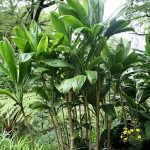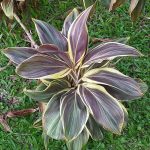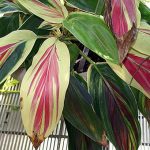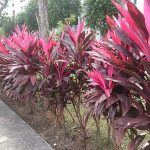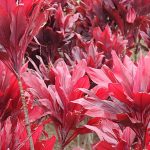Sort it out: Similarities and differences in plants
General 1st grade resources
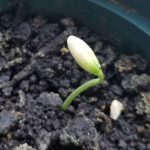 Webpage: “What Makes a Seed?” First grade science lesson on BetterLesson
Webpage: “What Makes a Seed?” First grade science lesson on BetterLesson
Webpage: “Plants and Biomimicry.” First grade science lesson on BetterLesson.
Similarities and Differences between different varieties within the same species
(Ain’t no party like a Lyon ti party)
Here at Lyon Arboretum, we have lots of ti (scientific name: Cordyline fruiticosa), and we’re willing to bet you’ve seen it before!
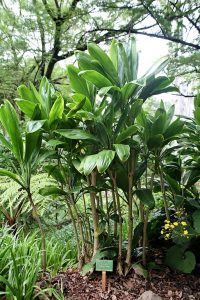
A ti plant. Credit: Cliff / CC BY (https://creativecommons.org/licenses/by/2.0)
Ti is useful for lots of things, including making ti leaf leis and skirts for hula.
Ti is also really cool because there are lots of kind of ti. The pictures below are all the same kind of plant (ti) but they’re different varieties (kinds) of ti!
- Credit: Cliff / CC BY (https://creativecommons.org/licenses/by/2.0)
- Credit: Ping an Chang / CC BY-SA (https://creativecommons.org/licenses/by-sa/4.0)
- Credit: Photo by David J. Stang / CC BY-SA (https://creativecommons.org/licenses/by-sa/4.0)
- Credit: Photo by David J. Stang / CC BY-SA (https://creativecommons.org/licenses/by-sa/4.0)
- Credit: Mokkie / CC BY-SA (https://creativecommons.org/licenses/by-sa/3.0)
- Credit: Forest & Kim Starr / CC BY (https://creativecommons.org/licenses/by/3.0)
Similarities and differences between sprouts and adult plants
Grow your own
One of the easiest ways to observe the similarities and differences between seedlings and adult plants is to plant your own seeds! The first leaves a seed puts out often have a different shape from the leaves the plant will have when it is an adult. Salad greens are especially fun for this because they grow fast and you can eat them when you’re done. Beans are another great seed to use because they are fast-growing and are more likely to be available in a regular grocery store.
Koa
The koa tree, which is native to Hawaii, has totally different leaves when it is a baby (seedling) versus when it is an adult.
The “baby leaves” are the true leaves of the tree and they have lots of tiny oval “leaflets” that sit across from each other.

Acacia koa young leaves. Forest & Kim Starr / CC BY 3.0 US (https://creativecommons.org/licenses/by/3.0/us/deed.en)
When the koa tree is an adult, its distinctive sickle-shaped leaves (you could also say they look like a crescent moon) appear. These “leaves” are actually the modified stem of the true leaves! Nature is bizarre!
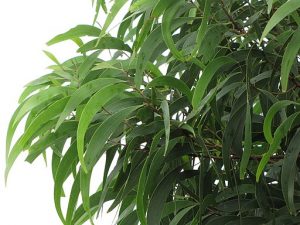
Acacia koa adult “leaves.” Forest & Kim Starr / CC BY 3.0 US (https://creativecommons.org/licenses/by/3.0/us/deed.en)
When the trees are in their awkward teenage years, you can see both types of “leaves” on one tree. This website has more pictures and information.
Back to main Teacher and Student Resources page

